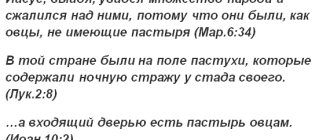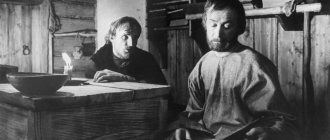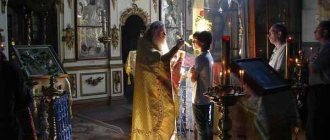Orthodoxy is an ancient religion with its own customs. An important part of its rituals are church sacraments. Every Orthodox Christian must undergo six of them. These include baptism, through which a person becomes a member of the church community. Confirmation, by applying holy chrism to the body of a believer, directs him to spiritual growth and self-improvement. Repentance frees from sins, communion reconciles and unites with the Lord, unction gives healing from ailments.
The wedding ceremony is also obligatory for all true Orthodox believers who want to get married. The seventh of the church sacraments is not intended for everyone, but at the same time it is considered all the more responsible and important. Ordination is a church procedure carried out when a person is ordained to the clergy.
Origin and meaning of the term
The very word “ordination” contains the visible meaning of the entire rite, since it is carried out by the bishop laying hands on the head of a person who wishes to be ordained. At the same time, special prayers corresponding to the given moment are read. This custom has ancient roots and dates back to the time of the Apostles. According to the teachings of Christians, a special energy is believed to be transmitted through it - Divine fire, the grace of the Holy Spirit.
Ordination is an act that symbolizes ecclesiastical succession. The apostles received their power and rights (priesthood) from Christ, and then transferred them in this manner to their followers. Orthodox Christians also call such a ritual ordination.
Origin story
Ordination originates from the time of Jesus Christ. His first disciples, numbering 12, are followers of Christian teaching. The Lord blessed them to spread the Christian faith and ordained them. The first apostles blessed their successors, and the chain of ordination continues to this day. The rite was first performed in Antioch with the election of Paul and Barnabas. The continuation of the tradition of ordination speaks of continuity in the spread of the teachings of Christ.
Initially, candidates were selected by the apostles, their disciples. Later, the election ceremony took place together with the believers and the flock. To elect a priest, the ordination of 3 bishops was necessary. There were periods in history when rulers could individually choose for the priesthood. But over time, only ordained bishops could elect bishops. In the 4th century, the first special educational institutions were created, where candidates for the clergy were trained.
Sacrament Options
Ordination is usually divided into three types. The first of them is deaconal. The second is priestly ordination, which is also called priestly ordination. The third type is episcopal consecration. The name of each type indicates to what clergy the person on whom the ritual is performed is promoted. In the Russian Orthodox Church it is believed that the first two types of procedures, that is, the ordination of a priest or a deacon, can be carried out by one person, as long as he has the rank of diocesan bishop.
To perform the third rite, several clergy of this rank are required - a council of bishops. Usually they are led by the patriarch or, appointed by him, an emeritus metropolitan. Upon completion, the ordained person puts on clothes corresponding to his new rank.
How the ritual is performed
The procedure, according to custom, is performed at the time of the divine liturgy and takes place on the altar of the temple. During it, prayer chants corresponding to this solemn occasion are sung in chorus. In this case, the person being ordained walks around the holy throne three times, then kneels on the right side in front of him. And the bishop or council of bishops performs the prescribed ritual.
According to the laws of Orthodoxy, consecration for a priest and a bishop can be performed on any of the days when a full liturgy is held with the so-called Eucharistic canon. Ordination to the rank of deacon is also permitted at the Liturgy of the Presanctified Gifts. But on each day only one person should be ordained.
Three degrees of priesthood
The church hierarchy has several levels. Priests are not elevated to lower degrees by ordination. Only the highest ranks who have undergone the rite of ordination can perform church sacraments and initiate believers.
Deacon
At the lowest level of the priesthood are deacons. This rank has been preserved in the church since the time of the apostles, who gave it to 7 men of the Jerusalem community. The duties of the priest include participation in worship: reading the Gospel, call to prayer. But deacons cannot perform rituals for believers.
Ordination to the rank of deacon is carried out by the bishop at any liturgy after the transfer of the Holy Gifts to the altar. The candidate is accompanied to the entrance to the altar by subdeacons, and to the altar by deacons. The henchman gets down on one knee, and the bishop touches his head three times, reading a prayer. At the end, the deacon's vestments are placed on the initiate. He thanks for the grace sent, kissing the priest’s hand and shoulder.
Priest
The second-ranking priest, or presbyter, is ordained by the bishop before the main part of the liturgy begins. The candidate is greeted at the altar by the priests leading him around the throne. The future clergyman gets down on both knees. This suggests that he will receive more grace and be rewarded with higher responsibility. After receiving the priesthood, the priest will be able to perform all church sacraments, except for ordination.
The ritual is accompanied by the reading of special prayers, after which the priest is presented with the symbols of the rank: epitrachelion, belt, phelonion.
In gratitude, the priest kisses the given attributes of the rank, the hand of the bishop. Then he begins to lead Communion and says the prayer behind the pulpit. In the 7 days following ordination, the priest performs the liturgy. This is a sign that he has received from the Lord the possession of wisdom, intelligence, strength, knowledge, piety and the fear of God.
Bishop
To receive the highest rank of priesthood, bishopric, it is necessary to undergo a naming ceremony. First, the decree of election is read to the candidate for bishop. He must thank and accept, swear. The Patriarch and bishops bless the protege to be ordained. During the ordination of a bishop, the troparia of the Wedding are sung. The priest is vested in the same way as those who perform the sacrament of ordination.
After the ceremony, the choir sings “Worthy.” The newly initiated man, together with the bishops, goes to the middle of the church and is given the pastoral staff as a symbol of power.
Obstacles
There is an organic series for performing this sacrament. First of all, it is carried out only for the male half of the Orthodox population. In this case, this person must either, in accordance with monastic vows, renounce everything worldly, or, not being a monk, have a certain marital status - must be in a first marriage, concluded in accordance with church traditions.
There are other obstacles to ordination, in other words, circumstances that do not allow one to take holy orders through this rite. These are age-related organic, health and physical disabilities that make it difficult for this particular person to fulfill the duties assigned to him. And the undoubted and very big obstacles are: lack of faith, lack of experience and knowledge, moral vices, damaged public reputation. Also, the rite of ordination cannot be carried out if a person, in addition to church obligations, is burdened with any other obligations, and above all, state ones.
REQUIREMENTS FOR PRIEST CANDIDATES AND OBSTACLES TO ORDINATION
A priest, as a spiritual shepherd, teacher and mentor of the people of God, must have certain qualities and lead a certain way of life, consistent with the spirit of the Church. A candidate for clergy must deeply know and understand the teachings of the Orthodox Church and possess the strength of the Christian faith, lead an impeccable lifestyle in accordance with the commandments of the Lord Jesus Christ and the teachings of the Church. As the experience of the Church shows, not all people who consider themselves Christians can be ordained as clergy and clergy.
Incapacity for the priesthood
In the Orthodox Church there is a concept of two types of inability to serve in the priesthood: absolute inability, when ordination is unacceptable in any case; and even if it was done, it is considered invalid by the Church. There is also a relative inability to the priesthood, due to some deficiency, which is an obstacle to the priesthood, but allows for the possibility of ordination if permission (blessing) is given by the highest church authority.
From the point of view of the Church, unbaptized persons and women are absolutely incapable of the priesthood. An unbaptized person, by definition, cannot be a clergyman, since he is not a member of the Church, and, therefore, cannot be the spiritual shepherd of the people and perform the sacred rites of the Church. Women, of course, can perform various duties in the church: housekeeping, singing in the choir, working in church institutions, helping in the church on various issues. But, on the other hand, women cannot be clergy, and in this opinion the Church is based on the testimony of Holy Scripture. Firstly, the Lord Jesus Christ Himself, when choosing disciples for Himself, chose only men, thereby providing a role model when choosing candidates for the clergy. Secondly, the Church also starts from the words of the Apostle Paul, who wrote regarding the place of women in the temple: Keep your wives silent in the churches; for they are not allowed to speak, but to be in subjection, just as the law says (1 Cor. 14:34). It is also worth noting the fact that in the ancient Church there were positions of deaconesses and presbyteresses, but these persons were still not members of the church hierarchy.
As for the main types of obstacles to the priesthood, at present, based on church law, all obstacles can be divided into three groups: obstacles of a physical, spiritual and social nature.
Physical obstacles
Obstacles of a physical nature can, in turn, be divided into two groups: obstacles associated with age restrictions, and obstacles due to health or physical disabilities.
Due to the fact that priestly service is a responsible and serious matter, for the performance of which the priest will give an answer to God Himself, it is quite natural that a candidate for clergy should have a certain age indicator. It is age that determines in a person the presence of a mature mind, strength of faith and certain life experience.
According to the canons of the Church, developed at the Trullo Council (14th canon), the age limit for becoming a deacon is 25 years, and for becoming a priest - 30 years. This is due to the fact that the Lord Jesus Christ Himself began His preaching at the age of 30. According to the 15th rule of the same Council, subdeacons can be appointed no earlier than the candidate reaches 20 years of age. It is worth noting, however, that in the experience of the Church there are often deviations from these rules. There is no clearly defined age limit for appointment as a bishop. So, for example, according to the Apostolic Decrees, the age for episcopal ordination is set at 50 years. Under Patriarch Photius, the book “Nomocanon” established the minimum age limit for becoming a bishop at 35 years, and in exceptional cases at 25 years. The earliest service in the Church can be started with the rank of reader, for which there are no strict age restrictions. According to the current Charter of the Russian Orthodox Church, candidates can be appointed to the ranks of deacon and presbyter (priest) from the age of 18 (civil age), and a candidate who is no younger than 30 years old can be appointed to the position of bishop.
Regarding the issue of physical disabilities, the Church points to two circumstances. On the one hand, physical disability in itself cannot be an obstacle to ordination to the priesthood. On the other hand, those persons whose physical disabilities could directly impede the service of God cannot be clergy. So, for example, according to the 77th Apostolic Canon, clergy can be persons with eye injuries, as well as those with leg diseases. But according to the 78th rule, persons suffering from deafness or blindness cannot be clergy. According to the 1st rule of the First Ecumenical Council, people who became eunuchs as a result of reasons beyond their control are allowed to be in the clergy, but for those who castrate themselves voluntarily, exclusion from the clergy is provided. On the basis of the 79th Apostolic Canon, the mentally ill cannot be ordained, as persons who are not free in their minds and actions.
Obstacles of a spiritual nature
Obstacles of a spiritual nature include three types of circumstances: the candidate’s lack of faith, lack of knowledge necessary for service, and the presence of moral vices.
A candidate for clergy must profess a strictly Orthodox faith in the Lord Jesus Christ and His Church. The candidate's faith must be firm and strong. A candidate's lack of faith can be revealed as a result of the following circumstances that happened to him.
Firstly, persons who have already fallen away from the Church cannot be ordained. The 10th rule of the First Ecumenical Council on this matter says: “If some of the fallen are promoted to the clergy, out of ignorance, or with the knowledge of those who did so: this does not weaken the power of the church rule. For such, upon inquiry, are expelled from the sacred rank.”
Secondly, persons who converted to the faith as a result of extreme circumstances also cannot be ordained to the priesthood. However, according to the 12th rule of the Neocaesarea Council, if these persons, after their conversion, have proven their faith by virtuous life and spiritual deeds, and if there are no other worthy candidates, then these persons can be ordained to the priesthood.
Two more categories of people cannot be ordained without special permission - those who have converted from heresy and the newly baptized (neophytes). So, for example, the Apostle Paul wrote in his Epistle to Timothy regarding the requirements for a candidate for bishop: He must not be a convert, lest he become proud and fall into condemnation with the devil (1 Tim. 3:6).
The Church also teaches that only those persons who have converted their entire family (all their household) to Christ can be ordained as clergy. In the 45th canon of the Council of Carthage it is said on this matter: “Bishops and presbyters and deacons should not be appointed until they have made everyone in their house Orthodox Christians.” Also, involuntary murderers cannot be ordained to the priesthood (43rd rule of Basil the Great).
It should also be noted that the very life of a candidate for clergy should be filled with virtuous actions, love for one’s neighbor, strong faith in Christ and should not be tainted by vicious deeds. A number of evil deeds are an obstacle to ordination to the priestly ministry. The Church includes in this group of obstacles to priestly service: murder, sacrilege, theft, grave digging (6th canon of St. Gregory of Nyssa), fornication, adultery, sodomy (61st Apostolic canon).
The necessary qualities that a candidate for clergy must possess include: humility, meekness, peace-lovingness, as well as teaching and the ability to instruct the flock in the faith. The Apostle Paul wrote about this in detail: A bishop must be blameless, as God’s steward, not insolent, not wrathful, not a drunkard, not a murderer, not a covetous man, but a lover of hospitable things, loving goodness, chaste, just, pious, self-controlled (Titus 1:7 - 8).
Regarding the issue of education, currently candidates for the clergy must have appropriate spiritual education, but, in extreme cases, they can ordain without it. However, in any case, a candidate for the priesthood must have knowledge of his faith, understand dogma and liturgical texts, and know the liturgical regulations.
Social obstacles
Social requirements for a candidate for the priesthood, in turn, are divided into three groups: marital status, responsibility to the state and public reputation.
The origin of a candidate for the priesthood cannot be an obstacle to his ordination (8th rule of Nicephorus the Confessor). Thus, persons who are illegitimate, or born as a result of second and third marriages have the right to be ordained. Regarding marital status, it is also worth noting that the Church does not ordain second-weds (and, in general, all those who have been in more than one marriage) to the priesthood (17th Apostolic Canon). Thus, monogamy (monogamy) is a mandatory requirement for a candidate for the priesthood. Passive bigamy, that is, marrying a widow or an abandoned person, is also an obstacle to ordination to the priesthood (18th Apostolic Canon). According to a number of church canons, the following circumstances are also obstacles to ordination: life with a wife caught in adultery (8th canon of the Neocaesarea Council), marriage with a close relative - niece (19th Apostolic canon), marriage with non-Christians and non-Orthodox wives (36th (45th) rule of the Council of Carthage). With all of the above, it should be noted that all these requirements apply only to candidates for the ranks of deacon and presbyter, and for bishops (13th rule of the Trullo Council) celibacy is mandatory.
In relation to the state, a candidate for clergy must also meet certain requirements of the Church. Thus, according to the canons of the Church, a person engaged in “affairs of public administration” (81st Apostolic Canon), as well as a person in military service (83rd Apostolic Canon), cannot be ordained. Persons who have partially or completely lost civil freedom also cannot be ordained to the priestly ranks: slaves and serfs (in various historical eras), deprived of freedom by a court sentence (at present).
Candidates for clergy must have a good reputation in society, and, therefore, according to the canons of the Church, such persons as moneylenders (14th canon of Basil the Great, etc.), actors (55th canon of the Council of Carthage), cannot be ordained. owners of gambling houses, etc.
In general, it should be noted that only the requirements relating to baptism and gender are unconditional for their fulfillment by the Church. On other points, the Church may allow deviations from the rules (dispensations), due to the outstanding qualities of the candidate for clergy, and this will not constitute a violation of the teachings of the Church.
Who gives permission to the sacrament
Initiations of the first two types are performed for persons who have already passed the lower stages of the church clergy. These include: subdeacons, clerics (church choir singers), and readers.
The decision regarding the acceptance of a certain person into the clergy and the possibility of admission to the rite of ordination as a priest is made by the bishop, that is, the clergyman who is at the highest level in the priestly hierarchy. This could be a patriarch, exarch, metropolitan, archbishop, or bishop. They can also be replaced by a special examiner appointed by them. He can obtain the necessary information from parishioners and glean it in a conversation with the applicant.
And based on all this he makes his decision. But the final word remains with the diocesan bishop. Some of the obstacles on the path to ordination can be eliminated by the rite of baptism (if one has not previously been carried out) and other church sacraments. But moral deficiencies can serve as especially important reasons for refusal.
Canonical obstacles to taking holy orders
The rules of the church, the canons, state that a candidate for ordination to the priesthood must be:
- clean spiritually and physically;
- a role model for believers;
- chaste;
- honest;
- a real teacher.
In his home, the priest raises his children correctly, being an example for the flock. The Church stands guard over the purity of its priesthood.
Physical nature
The age of the protégé prevents him from being ordained. Deacons can be ordained up to 25 years of age, elders - 30, bishops - 35. It is believed that at this time the mind reaches maturity, and the candidate has practical skills and strong moral positions. Deviations from the rules are possible in one direction or another, but physical defects are taken into account. It is impossible for someone who does not hear and is blind to become a priest. They do not initiate those who are lame, hunchbacked, or missing the index finger on their right hand.
Spiritual nature
The main thing in a candidate for the priesthood is true faith. Before the sacrament, they carefully consider the qualities of the candidate: whether he had any deviations into heresy when he turned to God. If coming to faith is associated with the fear of death, then such a person has little faith and virtue. Newly converted believers lack fortitude, which is also an obstacle to the priesthood. It is impossible to attract for ordination those who have been convicted of various crimes, such as murder, theft, fraud.
Social nature
Anyone preparing to be ordained a priest should know that it is prohibited to perform the ceremony if the candidate:
- there were several marriages;
- the wife commits adultery;
- second wife;
- the wife has a different faith.
If a bishop must be celibate, then the priest and deacon must be pure and immaculate, like their wives.
Candidate testing
It is impossible to find out everything about a candidate for priesthood. Therefore, before the initiation ceremony, the protege undergoes tests. Tests are carried out either publicly in front of the entire community, or secretly through confession. The bishop responsible for the protege is obliged to identify the integrity of the candidate. They also listen to the opinions of church people.
Episcopal ordination
Since ancient times, the rite of consecration to bishops was considered extremely responsible and important and became possible only for ministers of presbyteral dignity, that is, for persons at the second level of the church hierarchy. In the old days, the election and confirmation of a new bishop was carried out by all the bishops and the people, who had to consult and decide that he was worthy.
Currently, his candidacy is being proposed and considered by the Holy Synod and the patriarchs. And on the day before consecration, the newly elected bishop undergoes a test, after which the rite of consecration is performed, and the people bless the newly consecrated.
The inner side of the ritual
Christians believe that in addition to the visible side, the sacrament of ordination also has an internal, that is, invisible to mere mortals essence. Orthodox believe that this side of the rite consists of acquiring the special grace of the Holy Spirit. Confirmation of this point of view can be found in the Bible, in the part where it tells about the acts of the Apostles - disciples faithful to the cause of Jesus Christ. It also says that such a ritual was established by the Lord himself.
According to the lines of the New Testament, the Holy Spirit was sent down on his grateful followers on the day of Pentecost. And since then, this Divine fire has been acting in all clergy ordained in the right way, instructing them, giving them the opportunity to heal people spiritually and physically, being transmitted from consecrated person to consecrated person, from bishop to bishop.
And, therefore, only a person ordained in the right way, that is, who has become the successor of the Apostles, and therefore of Jesus himself, can break the sacred bread, conduct weddings and funeral services, listen to confessions and absolve sins.
Catholic sacrament
Catholicism is, as you know, one of the ancient branches of Christianity. Church ministers who are adherents of this trend are believed to have received blessings for their activities from the Apostles themselves. This means that all priests of the Catholic churches also accept the apostolic succession with respect and faith, being considered its heirs. Catholics believe that over the many centuries of the existence of Christianity, it has not been interrupted.
However, representatives of two religious movements, Catholicism and Orthodoxy, have different views on ordination in the church. For example, Catholics cannot ordain deacons who are married, even if he is the first and consecrated by the church. But, at the same time, their ritual for bishops turns out to be more simplified, because even one bishop can perform it, while, according to the canons revered in Orthodoxy, there should be at least two or three of them.
Who can be ordained
Climbing up the church hierarchical ladder is available to those who have:
- lower ecclesiastical positions;
- age from 18 to 30 years;
- secondary education;
- healthy psyche, physical strength;
- recommendation from an Orthodox priest.
A deacon and a priest can be married, but it is better for a bishop to become a monk and take a vow of celibacy. In exceptional cases, marriage is allowed if the wife agrees to become a nun. The requirements for the wives and children of a priest are strict. The priest's family should be an example in behavior for the flock.
On continuity in Protestantism
A more complicated matter with apostolic succession lies in Protestantism. This is a relatively young religious movement in Christianity. It arose in Europe only in the 16th century, as opposition to Catholicism, and therefore, according to more ancient movements, it departed from the true canons of Christianity, without receiving the due blessing from the followers of Christ. And, therefore, ordination to the priesthood is not a rite of transmission of Divine grace from bishop to bishop, as was originally established. This gives rise to opponents of this trend to claim that adherents of this religion are not the heirs of the Apostles, and therefore of Jesus Christ.
Protestants deny such attacks, arguing that it is difficult, after more than two thousand years, to say unequivocally that the continuity through ordination between Catholics and Orthodox was not interrupted at some stage. And the reliability of the records about this, available in religious archives, may be subject to great doubt. Moreover, it is impossible to judge whether all those ordained were truly worthy.
From the history
In general, ordination is an action that, even outside of a religious context in ordinary human communication, is quite common. But since ancient times, in many cases, it was customary to give it a sacred meaning. It was believed that a person laying hands on another was able to convey to him not only a blessing, but also spiritual strength, power, a great destiny for religious service or a grand purpose. Even before the advent of Christianity, ordination and rituals associated with them took place in many religions, including Judaism, as evidenced by numerous episodes in the Old Testament. It appears that Christianity, which emerged from Judaism, only adopted this custom from its more ancient predecessors.
A clear biblical example of the above is when the Lord instructs Moses to lay hands on Joshua before the Jewish people, thus giving a piece of his power and glory, the spirit of wisdom, so that the entire community will respect and obey him. Joseph and Jacob, as well as many other biblical heroes, blessed their children and successors by the laying on of hands. Not to mention that it is known from the New Testament that Jesus Christ himself healed by laying on of hands, thereby transferring part of his power. It is not surprising that since ancient times this action has been seen as a special sign.
Ordination in Judaism
The rite of ordination in Judaism was called “smicha”. The word itself is also translated from Hebrew. Thus, in ancient times, rabbis were given not only religious, but also legal powers, that is, the right to hold court, resolve financial issues, and influence people’s destinies with their authority. That is, it turned out that ordination is approval for a certain responsible type of activity. It was believed that when judges sit, God is invisibly present among them.
The ancients believed that a person accepting ordination must have truthfulness, fear of God, wisdom, hate self-interest and have a good education. The rite of smikha itself was accompanied by a festive ceremony. And the hero of the occasion addressed the people with a solemn speech and received in response congratulations on his ordination.
Conditions for the validity of consecration
One of the most important acts of determination of the degree of priesthood is ordination. It will be valid and legal if a number of conditions are met. The conditions apply to both those who perform ordination and those who are proteges.
Location
The ceremony is performed in an Orthodox church and by an Orthodox bishop. The validity of the ordination is recognized if it was carried out in the Catholic Church. But the reality of the Old Believer hierarchy is not true.
Order
According to the canons of the church, it is impossible to accept the highest position without passing through the lower levels of the priesthood. How long one can remain in the rank of deacon or priest in order to receive a higher rank is not specified. The candidate must exhibit qualities that are worthy of the highest degree of priesthood.
Ordination to a specific place in a specific temple
The priesthood received by a protege requires service in a specific place. After ordination, the priest receives a place of service in a rural, city church, monastery, or temple. The resolution will be considered invalid if the priest does not perform the service.
Non-repetition
The rite of ordination is performed in relation to a specific person once. Repeating the ceremony is prohibited, since the desire for a second consecration brings condemnation to the bishop who ordained the first time. Repeating the ritual is a denial of the validity of the first consecration, which is blasphemous.
Ordination of women
In Judaism, as in Orthodoxy, a woman did not have the right to go through the rite of ordination and take holy orders. These are age-old traditions. A woman could not lead worship, be a rabbi or a judge.
But in the second half of the last century, this issue not only began to be revised, but also gradually acquired extremely important importance. More and more opinions were expressed that the Bible itself does not give any special instructions in this regard. While religious customs were often formed under the influence of prejudices and prejudices. Christianity and its customs took root in a world where there was an atmosphere of lawlessness and oppression of women. And historical conditions only aggravated their unenviable position.
But the modern church is trying to correctly re-evaluate the old traditions. Instances of women being ordained in Protestant churches are becoming increasingly common. And Catholics and Orthodox Christians are having serious discussions on this matter. But laws changing church foundations have not yet been adopted.
Concept of celibacy
The vow of celibacy for men is typical for clergy of the Catholic Church. In Orthodoxy, deacons and priests have the right to start a family. Bishops are prohibited from having a wife. In this case, the highest rank is given to monks. If celibacy is not connected with monasticism, then for ordination as a bishop one must:
- have higher education;
- undergo an internship in a monastery or large parish for 2 years;
- receive recommendations from a confessor, the rector of a religious educational institution, or the priest of the parish where you completed your internship.
The severity of the test for those who live a worldly life and do not marry is related to the temptations surrounding the candidate.








